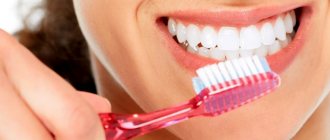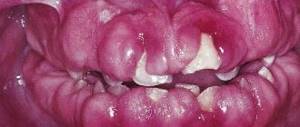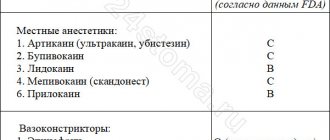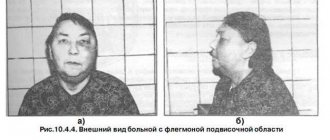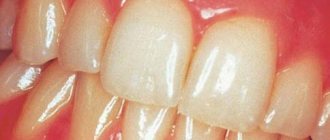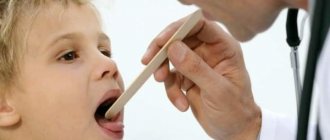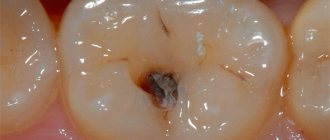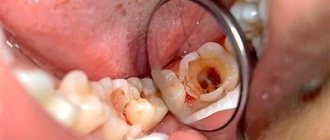Thick saliva is the reason
Let's look at the most common reasons why saliva can be thick. The most common factor that accompanies the symptom in question is dry mouth syndrome (xerostomia).
In this case, there is a sharp reduction in the volume of fluid produced by the glands and, as a consequence, an increase in its viscosity. Xerostomia can be suspected based on the following additional signs:
- pain or discomfort in the throat;
- bad breath;
- burning sensation on the tongue or palate;
- dryness of mucous membranes, lips, corners of the mouth;
- coarsening of the tongue;
- distortion of taste sensations.
When thick, viscous saliva is released in conjunction with the disease, the reasons may be as follows:
- taking certain medications, usually antihistamines, decongestants, urinary and choleretic drugs, as well as various antidepressants, painkillers;
- radiation therapy and chemotherapy during the treatment of malignant tumors;
- neurological diseases;
- hormonal pathologies;
- Sjögren's syndrome;
- autoimmune diseases;
- psychogenic changes;
- dehydration of the body;
- rheumatoid disorders.
Paradontosis
With periodontal disease, sticky saliva may appear. Damage to the tissues near the teeth is accompanied by pain, fever and other symptoms, and this also affects the consistency of the salivary fluid, it becomes viscous and sticky. In patients with this pathology, chewing function is impaired and the gums begin to bleed.
If periodontosis is not treated, the process penetrates into deep tissues, which can cause inflammation. The resulting plaque and tartar cause loosening and tooth loss.
The disease is accompanied by mobility of teeth, itching and discomfort in the gums
Thick white saliva in the mouth - candidiasis
Another common cause of increased viscosity of this liquid is oral thrush. Fungi of the genus Candida, when intensively multiplying, begin to colonize the mucous membranes, causing dryness, burning, the formation of erosions and a thick white coating. As a result, saliva production decreases and it acquires a characteristic whitish color.
The causes of oral candidiasis may be:
- contracting an infection from a sick person through close contact, kissing, or sharing utensils;
- dysfunction of the immune system;
- long-term use of antibiotic drugs, corticosteroid hormones.
Thick saliva in the throat
In addition to the above pathologies, an increase in saliva viscosity can be provoked by various diseases of the throat and tonsils, such as laryngitis and tonsillitis. The progression of these diseases leads to the formation of white purulent capsules in the throat, which periodically open on their own or during a cough. Because of this, a feeling of the presence of a foreign body, a lump, is created. In addition, an increase in body temperature during inflammatory processes provokes dehydration of the body, which leads to disruption of the salivary glands.
Other factors causing the described symptom are considered to be diseases of the oral cavity - periodontal disease and periodontitis. These diseases are characterized by dryness of the mucous membranes up to the exfoliation of the epithelium and, as a result, an increase in the viscosity of saliva.
Thesiography - diagnostics of saliva. Saliva and its effect on oral health
What is the pH of saliva?
This is a pH value that helps determine the acidity of oral fluid.
Determination of the pH of saliva is carried out with special test paper strips soaked in acid and an acid-base indicator. A drop of saliva from a pipette is applied to such a strip; the saliva, to one degree or another, neutralizes the acidic impregnation of the strip, as evidenced by a change in the color of the indicator. Most often, the initial acidic pH level = 4.5 corresponds to a yellow-brown color, slightly acidic pH = 4.5-5.5 - green color, neutral pH - blue color. The closer the strip gets to the neutral state under the influence of buffer forces, the better.
The role of Ph in the development of caries
The reflux of acidic stomach contents through the esophagus into the oral cavity helps reduce the pH of saliva and plays an active role in the development of “local” pathological processes. After the hydrochloric acid has reached its destination, the Ph of the mixed saliva decreases to 7.
The secretion, which normally has alkaline properties, with an acidity level of 6–6.2 causes the destruction of tooth enamel, its demineralization, which subsequently results in the appearance of carious lesions. The gums become inflamed, swollen, red, and the amount of mucus on the mucous membrane increases noticeably. Oxygen-rich saliva prevents the proliferation of pathogenic microflora; with reduced acidity, these microorganisms “bloom.” Hunger, excitement, stress, pronouncing a long monologue, breathing through the mouth - these are all the factors that lead to a decrease in Ph. The same phenomenon is associated with natural age-related changes in the body.
The pH of mixed saliva allows us to judge the degree of demineralization of free dental tissues. This biological fluid constantly maintains a neutral acid-base reaction (average value - 7.2) of the oral environment due to the proteins and phosphates it contains.
According to the results of modern research, it is the prolonged exposure of acids to the hard tissues of teeth that provokes the appearance of carious lesions. When acidity decreases, saliva retains and binds calcium atoms, which leads to demineralization of teeth. Biological fluid prevents the dissolution of enamel and ensures the diffusion of calcium and phosphorus ions.
Saliva and its effect on oral health
It should be noted that the development of caries is associated not only with teeth and the activity of bacteria. The oral cavity represents
is a complex of organs and tissues in a moist environment (saliva). Saliva is a complex secretion. Oral fluid is commonly referred to as "mixed saliva." It primarily consists of the secretions of the major and minor salivary glands. In addition, it contains a number of components of non-salivary origin. These include: fluid of the gingival groove, serum components and blood cells, bacteria and their metabolic products, desquamated epithelium and cellular components, viruses and fungi, food debris and sputum secreted from the bronchi. Saliva is 99% water. The remaining 1% consists of large molecules of organic compounds such as proteins, glycoproteins and lipids, as well as small molecules of organic substances such as glucose and urea, electrolytes, mainly sodium, calcium, chloride and phosphates.
Mixed saliva is complete saliva without impurities that can be removed by centrifugation, or a mixture of pure saliva from all sources. Pure saliva is a liquid produced and secreted into the oral cavity by three pairs of large and many small glands. Every day, from 300 to 1500 ml of saliva is secreted into the human oral cavity. The production of saliva during the day is uneven: within 14 hours, without eating, approximately 300 ml of the so-called basic, unstimulated saliva is produced (salivation rate - 0.25-0.50 ml/min), within 2 hours, 200 ml is released against the background of food stimulated saliva (at a rate of 2.0 ml/min), and in the remaining time - 8 hours of night sleep - salivation practically stops (0.1 ml/min). At any given time, there is about 0.5 ml of saliva in the oral cavity. The prevalence and intensity of caries depend on the rate of salivation; these indicators are higher in children with a sharp decrease in salivation.
Saliva is well known to have protective properties against dental caries. The most direct evidence of this fact is the development of “blooming” caries following the cessation of the functioning of the salivary glands due to irradiation with high doses, due to tumors of the head and neck. Such caries is so destructive that within a few weeks it affects usually caries-resistant surfaces and causes complete destruction of the crowns of the teeth.
The main properties of saliva that provide protection against caries are the following:
- dilution and clearance of food sugars; • neutralization and buffering of acids in dental plaque; • providing ions for the remineralization process.
- lysozyme - can destroy the cell wall and dissolve bacteria; • lactoferrin - connects iron atoms to bacterial cells, which gives a bacteriostatic effect; • lactoperoxidase group - thiocyanin - H2 + O2 - the formation of oxygen springs gives a bactericidal effect, these sources accompany the reaction of many unsaturated fatty acids in the cell wall of the bacterium.
Saliva has a significant effect on the pH level of dental plaque, including preparing the food bolus for swallowing, as a result of which mechanical and chemical cleaning of the oral cavity occurs, and food debris that adheres to the smooth surface of the tooth is eliminated.
At the same time, they are partially purified enzymatically. Both of these processes are essential for the prevention of caries. Saliva protects the mucous membrane from damage, and also protects teeth from pathological abrasion by antagonist teeth. The enamel-saliva system can easily withstand a short-term “attack” of acid on the teeth.
Fluorine, phosphates and calcium found in saliva are the initiators of remineralization. The buffer system can neutralize acids to some level. In the moist environment of the oral cavity, acidic bacterial products cause constant pH fluctuations, which are neutralized by the buffer system. The buffer system is a protective element of saliva. Direct release of substances that inactivate bacteria:
The concentration of calcium and phosphates in saliva is very significant for the integrity of teeth.
Saliva is saturated with a solution of these ions. Inhibitory substances, similar to some bodies containing phosphates, block the spontaneous precipitation of the salt mixture on the surface of the enamel, which weakens the connection of microorganisms with the tooth surface. On the other hand, the solubility of mineral substances decreases. The reason for the restoration of superficial carious defects is not a single deposition of ions from saliva, but rather the recipitation of dissolved mineral substances removed from the deeper layers of the carious defect. The frequency of fluoride use plays an important role. Mineralizing potential of saliva
The mineralizing potential of oral fluid can be judged by the type of crystal-like formations in a drop of saliva placed on a glass slide. By the type of microcrystallization of saliva, one can judge the patient’s susceptibility to caries. Microcrystallization of saliva has individual characteristics and this may be associated with the general condition of the body, oral cavity, and nutrient load. The formation of microcrystals can characterize the remineralizing ability of saliva, and the intensity of caries is associated with the type of microcrystallization. In caries-resistant individuals, tree-shaped crystal-like formations are observed with a tendency for a drop of saliva to be located in the center.
In those susceptible to caries, this structure changes or disappears completely. It is believed that there is a close relationship between the structural and mineralizing properties of saliva.
There are three types:
Type I - a clear pattern of elongated crystalloprismatic structures fused together and occupying the entire surface of the drop. This type is inherent in the compensated form of caries.
Type II - in the center of the drop, individual dendritic crystalloprismatic structures of smaller sizes are visible than in type I. Characteristic of the subcompensated form of caries.
Type III - a large number of isometrically located crystalline structures of irregular shape are visible throughout the drop. This type of microcrystallization is characteristic of the decompensated form of caries.
At the same time, microcrystallization of saliva reflects the state of the body as a whole, so this parameter can be used for rapid diagnosis of some somatic diseases.
Conclusion
In the structure of dental morbidity, dental caries occupies one of the leading places, which in the absence of timely and correct diagnosis, which in addition to the main examination methods, additional ones should be used (such as test-measurement of saliva pH and thesiography). It is impossible to prescribe adequate treatment, which in turn will lead to the threat of the development of various odontogenic complications, the appearance of foci of chronic infection, functional disorders of the dental system, which have a negative impact on the patient’s health as a whole. Therefore, all efforts of specialists should be aimed at preventing dental caries using the latest technologies and materials available on the global dental market.
In our Jasmine family clinic, you can conduct a saliva pH test and tesiography (determining the mineralizing potential of saliva), where the doctor will tell you in detail about the health of your oral cavity and select an individual course of prevention.
Thick saliva - treatment
To develop an adequate treatment regimen, it is important to diagnose the exact cause of increased saliva thickness.
For xerostomia, experts recommend using special rinses, oral moisturizers, saliva substitutes, medicated chewing gums and candies.
In other situations - infections, fungi, inflammatory processes - it is necessary, first of all, to treat the primary disease, and then restore the activity of the salivary glands.
Attention! The information published on the site is for informational purposes only and does not constitute a recommendation for use. Always consult your physician regarding any diagnosis or use of any medications or treatments.
Salivation
Saliva production is mainly associated with digestion and is controlled by the autonomic nervous system. Nerve endings located in the oral cavity transmit information about the quantity and composition of food to a certain part of the brain. Then the corresponding command is transmitted to the salivary glands, which begin to secrete the required amount of saliva. In this case, both liquid and viscous saliva is released.
Also, saliva can be released not only because food has entered the mouth. Such information can be transmitted to the brain by the organs of smell or vision. Often, just the sight of a sour lemon will make you salivate, or the smell of fresh bread will make you salivate. In addition, increased salivation when dangerous substances enter the human body, with stomatitis, gingivitis, neuroses, encephalitis and toxicosis of pregnant women.


